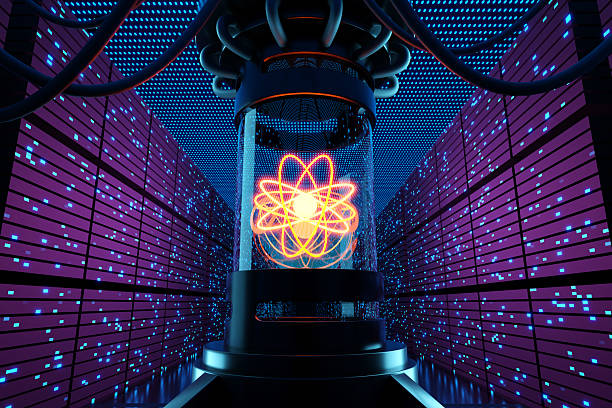Q1. Could you start by giving us a brief overview of your professional background, particularly focusing on your expertise in the industry?
As a seasoned academic and researcher, my professional journey has been marked by significant contributions to nuclear fusion and technology management. I was educated at Netarhat School, IIT Kharagpur, and Delhi University, and received my Ph.D. from the University of California, Berkeley, in 1986, where I focused on nuclear fusion research at Lawrence Berkeley Laboratory. I was among the first in India to do a Ph.D. in this field. I spent nearly two decades as a nuclear fusion scientist in National Labs in the USA and India. I was the key person in improving the performance of two Tokamaks (nuclear fusion reactor) set up in India in the late 1980s by doing modeling and simulation, data acquisition system, sub-system development, and experiments. I was Project leader of ADITYA Tokamak and SST-1 Tokamak operation and Control group from 1996- 2002. In 2020, I started the first private nuclear fusion project called “Project Sanlayan” with a focus on medical isotope production and other usage of fusion-produced neutrons before aiming for energy production.
My career includes roles as a professor at DA-IICT and as the head of India's Technology Think Tank, TIFAC. Currently, I serve as the Vice Chancellor of D Y Patil International University, Pune, where I have been instrumental in shaping innovative educational programs and fostering research collaborations.
Q2. With the global nuclear medicine market projected to reach $32.40 billion by 2033, growing at a CAGR of 11.46% from 2024 to 2033, how are advancements in compact nuclear fusion reactors influencing the availability and cost-effectiveness of medical isotopes?
The availability and affordability of medicinal isotopes might be greatly increased by developments in small nuclear fusion reactors. Fusion reactors are perfect for creating medical isotopes like 99Mo, which are essential for cancer diagnoses, since they provide high neutron energy and flux density without generating radioactive fission fragments. This technology could reduce reliance on aging fission reactors and provide a more sustainable and efficient source of isotopes, potentially lowering costs and increasing supply reliability.
Q3. With India's nuclear imaging equipment market projected to reach USD 273.5 million by 2030, growing at a CAGR of 4.1%, how can advancements in nuclear fusion technology enhance domestic production of medical isotopes to meet this increasing demand?
By offering a new, effective technique for isotope manufacturing, developments in nuclear fusion technology can support India's domestic production of medicinal isotopes. The market for nuclear imaging equipment in India is expected to increase to a value of USD 273.5 million by 2030, and this might assist satisfy that need. India can improve self-sufficiency, lessen its reliance on imported isotopes, and guarantee a steady supply chain for medical isotopes—which are crucial for cancer treatment and diagnostics—by using fusion reactors.
Q4. Major corporations such as GE Healthcare, Siemens Healthineers AG, Fujifilm Holdings Corporation, Bayer AG, and Koninklijke Philips NV dominate India's nuclear imaging market. What strategies are these companies adopting concerning nuclear fusion applications in healthcare, and how might new entrants position themselves competitively?
By funding research and creating new technologies that make use of fusion-produced isotopes, large companies like GE Healthcare and Siemens Healthineers AG are probably going to concentrate on incorporating nuclear fusion applications into their healthcare portfolios. By creating cutting-edge uses of fusion technology in medical imaging and diagnostics, collaborating with academic institutions to promote fusion-based isotope production, and providing affordable solutions that take advantage of these developments, newcomers may establish a competitive position.
Q5. How is India's push for nuclear-based healthcare solutions influencing its medical tourism industry, and what role can fusion-driven medical advancements play in expanding this sector?
India's search for nuclear-based medical treatments, especially advancements in fusion technology, can significantly expand the country's medical tourism industry. By offering cutting-edge medicines using locally produced medical isotopes, India may attract more international patients seeking advanced and affordable cancer diagnostics and treatments. India might become a leading medical tourism destination by offering specialist treatments at reasonable prices.
Q6. How are AI and sensor network technologies being integrated into India's nuclear medicine ecosystem to improve diagnosis and treatment precision?
India's nuclear medicine ecosystem is incorporating AI and sensor network technology to improve the accuracy of diagnosis and treatment. By combining various data sources, AI agents may enhance image analysis, expedite clinical procedures, and support personalised medicine. Better healthcare outcomes and more economical use of resources can result from sensor networks' improved ability to monitor patient health and treatment results.
Q7. If you were an investor looking at companies within the space, what critical question would you pose to their senior management?
If I were an investor, I would ask senior management: "What strategies are you implementing to ensure the scalability and sustainability of your fusion-based medical isotope production, and how do you plan to address regulatory and public perception challenges associated with nuclear technologies in the healthcare sector?" This question highlights the need for companies to demonstrate a clear path to commercial viability and social acceptance of their innovative technologies.
Create an account to read the full article
Create Account
Already have an account? Sign in

